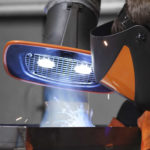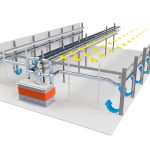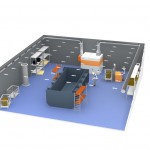Air purification technology in times of the corona virus: Are general ventilation systems still applicable?
Does the corona virus have an effect on air purification technology? This is a question safety officers are currently asking themselves: Does a general ventilation system in metal processing companies lead to viruses being able to spread even further in production? High filter efficiencies and the quality of the integrated filters indicate otherwise.
The corona virus (COVID-19) is spreading across the world. At the same time, safety concerns in companies are increasing. Metalworking is also affected by this. Here, there are often spacious production halls that make it possible to maintain the distance regulations of two metres recommended by recognised virologists. In order to provide comprehensive protection for production employees, however, safety managers are currently also looking into other health risks.
Corona virus: Can the general ventilation continue to run?
Air purification technology is also coming under scrutiny in the wake of the current health crisis. And for the following reason: Safety managers fear that the systems that actually serve to protect employees, in fact, could have the opposite effect in the current situation – namely a distribution of viruses. This line of thought refers exclusively to systems that allow the recirculation of air. This operating mode is carried out in three steps:
- The air contaminated during welding or cutting is extracted.
- After the hazardous substances are detected, the high-performance filters in the systems separate the particles.
- The air purification systems feed the cleaned air back into the hall.
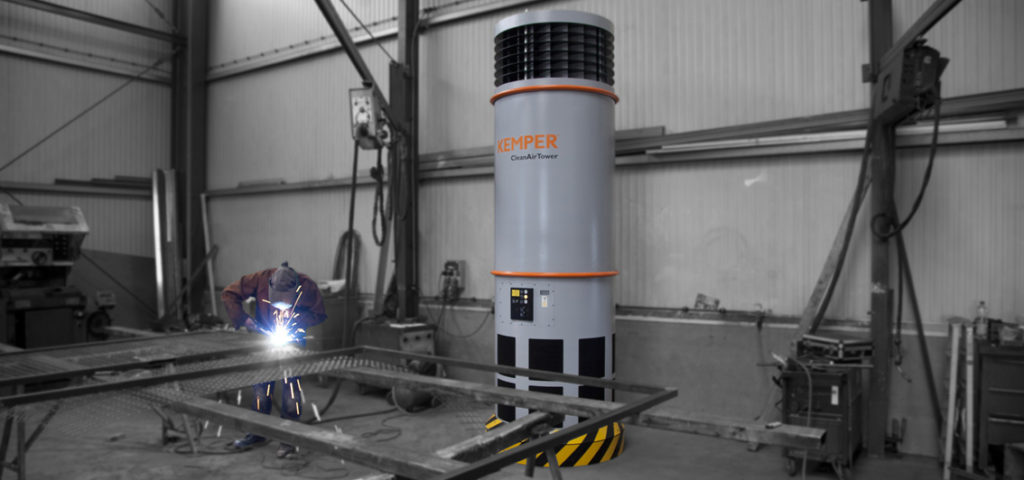 This is especially true of general ventilation systems that include:
This is especially true of general ventilation systems that include:
- Filter towers as stand-alone general ventilation according to the principle of layer ventilation
- Push-Pull systems
- General ventilation systems with displacement ventilation
- or General ventilation systems with mixed ventilation also as stand-alone variant
Those responsible for safety are questioning whether the corona viruses are even captured by the filter media due to their size and whether they are distributed further in the general ventilation system when the cleaned air is discharged. Would it not be better for the companies to not switch on the systems at all during the corona crisis?
Particle size: Welding smoke particles comparable to corona viruses
According to the knowledge about the corona virus that has been gained so far, however, there is currently no basis for these fears. The reason for this is the filter systems commonly in use today. As a rule, they feature both high quality filters and a high filter efficiency to separate even ultra-fine particles. Welding smoke particles and particles of the corona virus family are in the same order of magnitude. While welding smoke particles can be between 10 nanometres and 2 micrometres in size, corona viruses are between 120 and 160 nanometres in size.
Even for this particle size, general ventilation systems with appropriate filter quality have a filter efficiency of well over 99 percent. Due to the comparability of particle sizes, manufacturers also assume this high filter efficiency against viruses, so that the operation is still possible without restrictions. It is important to look at the filter classes. The best extraction and general ventilation systems for welding fume extraction are equipped with filters of class E12.
Processes in general ventilation systems have an anti-virus effect
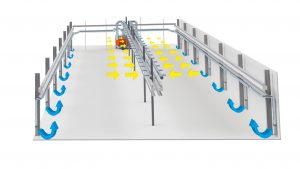 The processes within the plants are also likely to further reduce the spread of possible virus particles. This is because the viruses meet a dry dust layer of metal oxides, i.e. not a breeding ground. And, on such surfaces, viruses are known to have a survival time of just a few hours. Since the general ventilation systems used for welding fume extraction usually do not have a heating or cooling function, the air purification processes do not cause any further hygiene problems.
The processes within the plants are also likely to further reduce the spread of possible virus particles. This is because the viruses meet a dry dust layer of metal oxides, i.e. not a breeding ground. And, on such surfaces, viruses are known to have a survival time of just a few hours. Since the general ventilation systems used for welding fume extraction usually do not have a heating or cooling function, the air purification processes do not cause any further hygiene problems.
Incidentally: General ventilation systems are only suitable for welding fume extraction as a supplement to local exhaust ventilation or in cases where collection at the source is not practicable. Some welders also use personal respiratory protection at work. To protect themselves against welding fumes, masks of class FFP2 or FFP3 are generally used.



